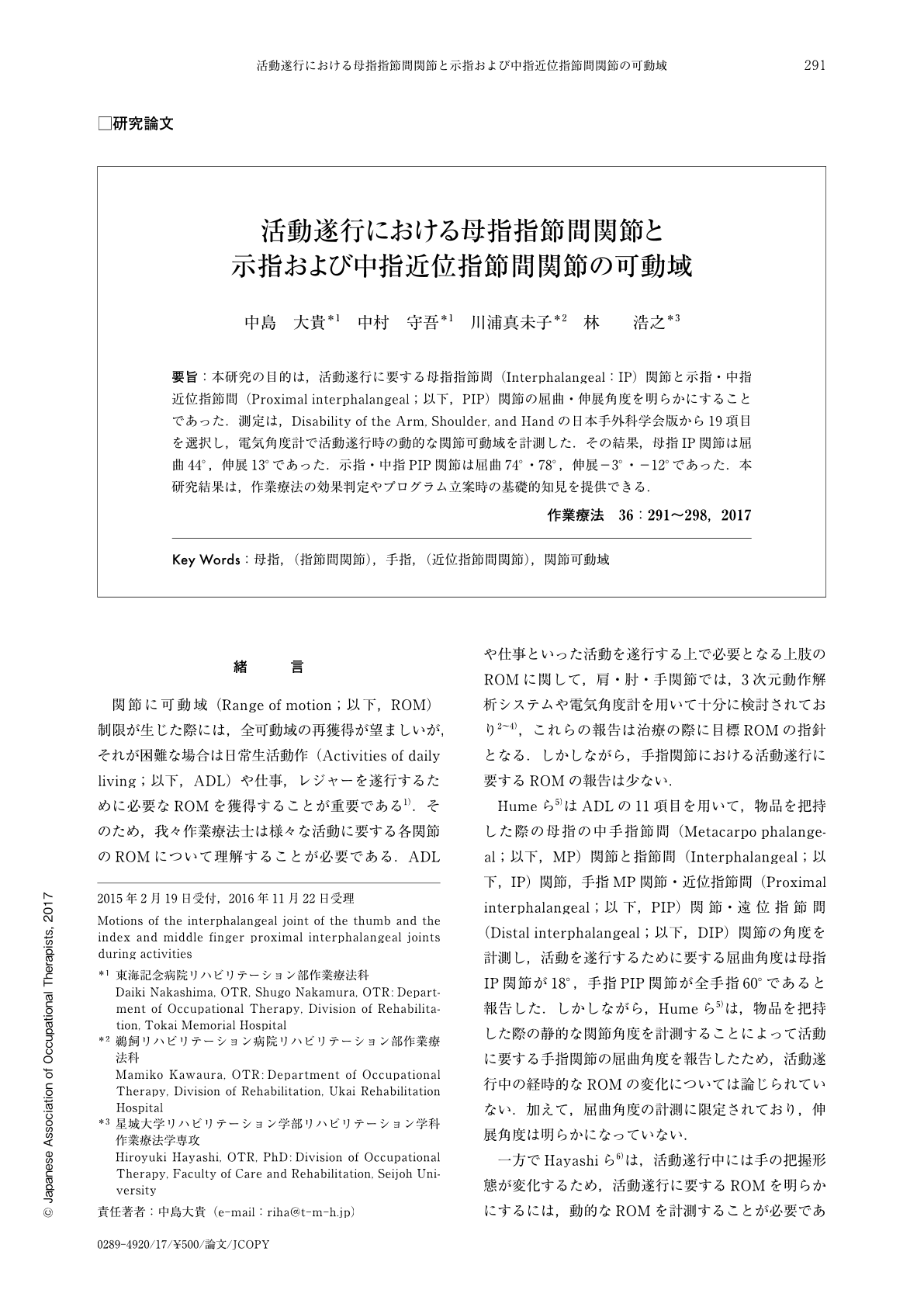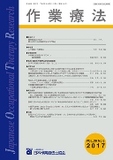Japanese
English
- 販売していません
- Abstract 文献概要
- 1ページ目 Look Inside
- 参考文献 Reference
要旨:本研究の目的は,活動遂行に要する母指指節間(Interphalangeal:IP)関節と示指・中指近位指節間(Proximal interphalangeal;以下,PIP)関節の屈曲・伸展角度を明らかにすることであった.測定は,Disability of the Arm, Shoulder, and Handの日本手外科学会版から19項目を選択し,電気角度計で活動遂行時の動的な関節可動域を計測した.その結果,母指IP関節は屈曲44°,伸展13°であった.示指・中指PIP関節は屈曲74°・78°,伸展−3°・−12°であった.本研究結果は,作業療法の効果判定やプログラム立案時の基礎的知見を提供できる.
The purpose of this study was to clarify the flexion and extension angles of the thumb interphalangeal (IP) joint, and the index and middle finger proximal interphalangeal (PIP) joints required to perform activities. There are 19 activities related to the Japanese Society for Surgery of the Hand Version of the Disability of the Arm, Shoulder, and Hand Questionnaire. We used an electrogoniometer to measure the dynamic range of motion of IP joint of thumb, and PIP joints of the index, and middle fingers when performing the 19 activities. The resulting flexion angle of the thumb IP joint was 44° and the extension angle was 13°. Index and middle finger flexion angles of the PIP joints were 74° and 78°, respectively; the extension angles were -3° and -12°, respectively. The result of this study may be used for planning and evaluating occupational therapy programs.

Copyright © 2017, Japanese Association of Occupational Therapists. All rights reserved.


